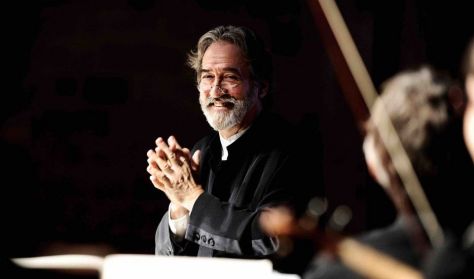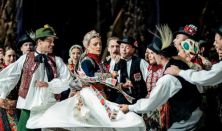Georg Friedrich Handel: “Water Music” Suite No. 1 in F major, HWV 348
Georg Philipp Telemann: Water Music (”Hamburg Ebb and Flow”), TWV 55:C3
Christoph Willibald Gluck: Don Juan ou Le Festin de Pierre (Don Juan or The
Feast of Stone) — ballet suite, Wg 52
conductor: Jordi Savall
The program showcases three musical milestones and three personalities of the 18th century. The protagonist of the first half of the evening is water. The Händel suite was first performed on the Thames, and Telemann’s piece celebrates the source of Hamburg’s economy, the river Elbe. The two ten movement baroque suites are followed by Gluck’s ballet — at the end of the well-known story, Don Juan pays for his earthly sins. With a concert extolling the forces of nature, Savall aims to remind us that despite the environmental crisis, with collective effort, our planet can still be saved.
Water Music is associated with one of the most exciting concerts in the history of music. In 1717, Handel – who would fall in and out of favor with the ruler – hoped to please the monarch by composing three suites in honor of King George I. The pieces were performed on the Thames, on a boat close to the king’s barge. If the two vessels were close to one another, the orchestra would play the softer Air or one of
the minuets; if they were further apart, they played the more lively dance movements. The performance was a resounding success. The so called French overture of suite No. 1 begins slowly and elegantly, rich in drawn-out rhythms, and concludes with a lively, fast-paced passage. Among the following movements, we find a fanfare-like allegro, a staccato adagio, an elegant and robust minuet, a bourrée that appears with a different orchestration each time, and an andante closing the piece in a minor key.
In 1723, the centenary of the founding of the Hamburg Admiralty was celebrated with a grand event. Resounding with cannon shots and adorned with flags, the music for the occasion was written by Telemann, the city’s foremost composer, who wrote hundreds of suites throughout his life. In homage to the port city, the sea took center stage in the composition, evoking all of its moods and characters. After the overture showcasing the various facets of water, mythological figures familiar to sailors step into the limelight. First, Thetis, the sea nymph, appears asleep then awake (sarabande and bourrée), followed by the lovelorn Neptune (loure), the Naiads (gavotte), Triton (harlequinade), and finally, Aeolus and Zephyrus, the masters of the winds. The suite concludes with dance movements depicting the ebb and flow of the tide and sailors reveling in the tavern.
Barely a year before the famous Orfeo ed Euridice (Orpheus and Eurydice), Gluck composed his ballet pantomime, Don Juan. Similarly to his operas, Gluck reformed ballet as a genre by prioritizing the relationship between music and dramatic plot over the technical qualities of the performers. Elaborate characters, deep emotions, non-interchangeable and indispensable movements characterize his storytelling. The piece made an impact on Mozart's operas as well. After the overture of the suite that makes up a third of the ballet, the story of Don Juan and the governor unfolds, culminating in the music of damnation. After the monumental movement that brings to life earthquake, hellfire, and the restless dance of the Furies, the story concludes with the trumpet and trombone playing pianissimo.








